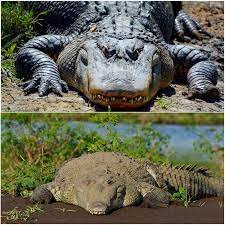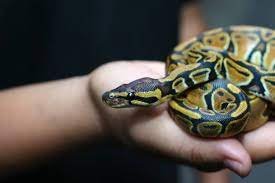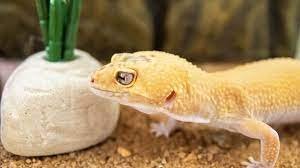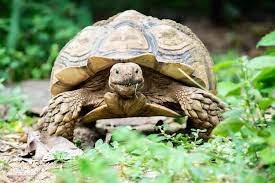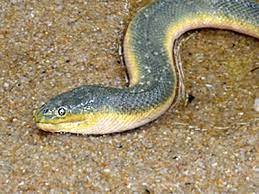It’s estimated that there are over 6,000 different species of lizards and that they can be found on every continent except Antarctica. It’s possible to find lizards as small as an inch in length and as large as the Komodo Dragon, which can grow to be more than ten feet in length. It’s no surprise that lizards have become so common as pets given the sheer variety of species, colors, and sizes available.
Bearded Dragon

Bearded dragons are one of the most popular and desirable lizard pets in the world of herpetology. These lizards are friendly to new owners and can learn to trust people quickly. After gaining trust in their caretakers, they are always game for some fun and don’t mind being handled.
Ackies Monitor

Although it is relatively large for a lizard, the Ackies Monitor lizard, which is native to Australia and looks very much like a smaller Komodo Dragon, is a great option for beginners. Even though their maximum length of 30 inches may be alarming to newcomers, these lizards have a calm and docile demeanor that makes them ideal pets for those just starting out. The average lifespan of these lizards is 15-20 years, so you should think about the commitment involved.
Red-Eyed Crocodile Skink
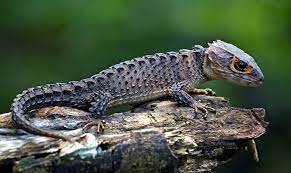
Among lizards, the red-eyed crocodile skink stands out for its unique beauty. Its name comes from the fact that its skin turns a bright shade of red around the eyes. Aside from its head, the lizard has a lot going for it. Small versions of dinosaurs, right down to the triangular shape of their skull and keeled scales!
Even though they look scary, red-eyed crocodile skinks are actually quite timid. They are shy, docile reptiles that prefer to stay out of sight. It will take some time for it to settle into its new environment, and even then you probably won’t see much action during the day. Because of their crepuscular lifestyle, they are only active at night and early morning.
Also, know Little Owl Bird Facts
Green Basilisk

The Green Basilisk has been given the unflattering moniker of “Jesus Christ Lizard” due to its remarkable ability to run across bodies of water. The tropical rainforests of Central America are its native environment. They consume a wide variety of foods, from insects and rodents to fruit. Due to their manageable size, these lizards are ideal for newcomers. They can get up to 3 feet in length, but despite their size, they weigh surprisingly little. They have special housing needs, including a large enclosure heated and humidified above average. Unfortunately, they don’t always take well to being handled, but they are fascinating to watch from a distance. Beginners who are prepared to meet the species’ unique husbandry needs and lack of human interaction are best suited to care for this species. Costing between $25 and $65 USD, they have an 8-12 year lifespan.
African Fat-Tailed Gecko
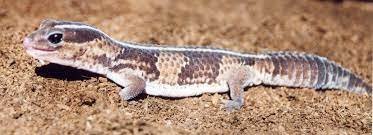
The African Fat-Tailed Gecko, a native of West Africa, is quickly gaining popularity as a pet due to its good temperament, ease of care, and high survival rate in captivity. Their thick tails give them their common name, and they require little attention. They reach a maximum size of about 9 inches and a captivity lifespan of 20 years with proper care. The African Fire Skink is one of the most well-liked lizards kept as a pet because of its attractive bright red coloring and low maintenance requirements. Although they are reserved and irritated when handled, these creatures are full of life and full of entertaining character. They can grow to be about 15 inches long and live for 15-20 years in captivity with relatively few health problems.
Argentine Black and White Tegu
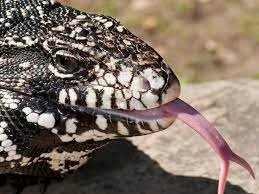
Although the Argentine Black and White Tegu can grow to be as long as 4 feet, despite its massive size, it enjoys being petted and handled by humans. Like many other intelligent lizards, these pets develop a soft spot for their human caretakers and can even be taught to use the restroom! These lizards have a 15-20 year lifespan when kept in captivity.
Caiman Lizard

If you’re a beginner keeper on the hunt for a fish with a striking pattern, look no further than the Caiman. Heavy, multicolored scales characterize this species. Their vivarium is a lively place because of their skill as climbers and swimmers.
The Caiman Lizard is among the largest of these reptiles. They can grow to be between two and five feet in length, so their enclosure needs to be substantial. They’ll want a large body of water in which to immerse themselves because swimming is one of their favorite activities. Similarly, these animals do best when kept in a very hot environment (with high humidity too). They have a mostly carnivorous diet, consuming creatures like insects, snails, crawfish, and clams that are native to the marshy areas where they live.
Blue-Tongue Skink

The Blue-Tongue Skink gets its name from the striking coloration of its tongue, and it also has a reputation for being a friendly and docile reptile. Weighting in at up to 4 pounds, they are hefty, but at only 20 inches in length, they are not particularly long for their size. They are great for new pet owners because they require little attention, enjoy being held, and can be tamed quickly. They typically live between 15 and 30 years, but some have been documented to live much longer.
Green Anole

The green anole is a great choice for a pet lizard because it is so easy to care for, even by young children. These lizards are common in kindergarten and first-grade classrooms because they are easygoing and unobtrusive. Its native range includes the southeastern states of the United States. You can regularly spot them in the local parks and backyards. These lizards are commonly seen perched in trees, surveying their surroundings. In order to attract a mate and claim their territory, males will wave their bright pink dewlap around. The green anole is very mellow when kept in captivity. In other words, a vast cage isn’t necessary. They need only a small tank that is vertical in orientation.
Chinese Water Dragon
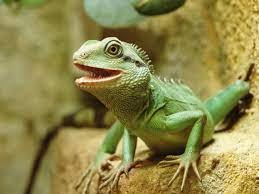
There are many different kinds of Water Dragons, but Chinese Dragons are the most common and easiest to care for. Once they are comfortable with you, they allow to be held and handled and are generally sociable. However, special care is needed for these lizards, including spacious enclosures, a large pool of water, and constant attention to humidity levels. If you can meet all of these conditions and are committed, these lizards make great first pets.
Rankin’s Dragon

To the untrained eye, the Rankin’s dragon could be mistaken for any other bearded dragon. Closer inspection, however, reveals subtle distinctions that set this species apart from its more well-known relative. When compared to real-world dragons, Rankin’s are noticeably smaller. Additionally, their “beard” is less pronounced. As a result of the efforts of the breeding community, these lizards can be found in a wide range of morphs. The social nature of this species is also noteworthy. Rankin’s dragons, in contrast to most pet lizards, do best when kept in small groups. Involvement in violent altercations is possible among males. However, women are perfectly capable of handling life on their own.
The behavior of a small group of lizards can be improved by providing them with a well-decorated enclosure. These reptiles need a mix of climbing branches, basking rocks, and concealing vegetation. When they need some quiet time, they often retreat to one of their many hiding places.
Leopard Gecko

The leopard gecko is among the most sought-after species of lizard for domestication as a pet (and one of the most popular types of pet geckos as well). They are readily available from most pet stores and usually come with an affordable price tag to boot!
This lizard gets its name from the black and brown spots that cover its entire body. Against the yellow-tan base color, these spots create a beautiful pattern that’s reminiscent of the leopard feline.
Measuring roughly seven to ten inches long as adults, leopard geckos are manageable and easy to care for. Despite being related to geckos, these lizards lack the characteristic sticky pads on their feet. Thus, they don’t require a tonne of climbing surfaces. You don’t even have to worry about them climbing up the glass!
Crested Gecko

Once thought to be extinct, the Crested Gecko was rediscovered in the 1990s. These animals are easily identified by the crested appearance created by the spines that run the length of their bodies. They are friendly lizards that welcome handling and are simple to care for, so long as they are provided with a large, tall enclosure that allows them to exercise their natural climbing instincts. They can reach a maximum length of 8 inches and a lifespan of 10 years.
Green Iguana

As a result of their attractive design and herbivorous diet, iguanas are among the most sought-after starter Lizards. They thrive on plant matter and are a good choice for first-time reptile owners who don’t want to deal with the hassle of feeding live food.
The largest lizard in this area, at 5-6 feet in length, they are found naturally only in Central and South America. They need a large enclosure with a swimming pool big enough for them to soak in because they grow so large.
Uromastyx
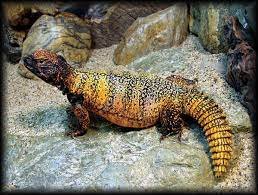
The Uromastyx is an excellent choice if you’re looking for a unique and interesting lizard for a pet. The practice of keeping this species as a pet is still in its infancy. Collectors place a high value on them, making them difficult to come by.
Northern African and Middle Eastern regions are home to the uromastyx. Therefore, they are most at home in desert-like environments. Normal reptile enclosures with humidifiers and wicking substrates will be too humid for them. Sand, rocks, and lots of fire are what they require, instead. They prefer temperatures of up to 120 degrees Fahrenheit in their basking area. Warmer temperatures are required even on the “cool” side.
Pygmy Chameleon
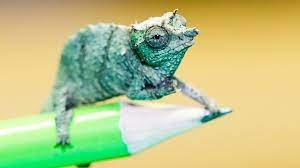
It’s worth noting that these lizards also look pretty neat. In comparison to other chameleons, this one has a more vertically proportioned body. Not only are their tails noticeably shorter, but so are their bodies. This species does not have a prehensile tail because it spends most of its time on the ground.
Tones of color are subdued in pygmy chameleons. Olive green, grey, and brown are some possible color combinations. When you consider their unusual body shape, you might think these lizards are leaves on their legs. They don’t need vast habitats because of their diminutive size. You need only provide a five-gallon tank to house one.
Jeweled Lacerta
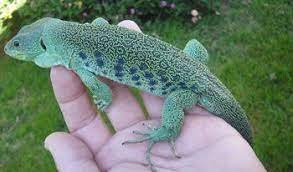
The Jewelled Lacerta is a large lizard that can grow to be more than 3 feet long, but despite its size, it is surprisingly light. They are relatively low maintenance, but it will take some time to train a timid lizard. Although they can be trained to accept handling, they still prefer not to be handled very often. The average lifespan is 12–20 years, but they can live much longer in captivity with the right conditions.
Panther Chameleon

The panther chameleon, a species of chameleon native to the lowlands of Madagascar, is highly sought after by herpetologists. The lizard’s ability to change color has led to some stunning color morphs. The history of keeping this species as a pet is unlike any other. In the 1980s, when they were first imported from Madagascar, very little was known about them. Many lizards that were kept as pets didn’t fare well in the confines of an aquarium.
Thankfully, a lot of progress has been made in the last few decades. Our increased knowledge of this pet lizard’s requirements has led to a marked increase in its expected lifespan. A panther chameleon’s captivity lifespan is estimated to be between three and seven years.
Savannah Monitor
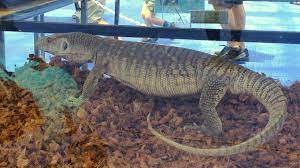
If you’re looking for a large lizard but don’t know where to start, a Savannah Monitor is one of the most docile monitor species. Because of their large size and penchant for digging, they’ll need a habitat that can support their weight and is spacious enough to accommodate their environment. Once properly trained, they relax when held and are neither overly active nor fearful. They can live for up to 20 years and grow to a length of 3 feet, making them relatively small among monitor species.
Long-Tailed Lizard
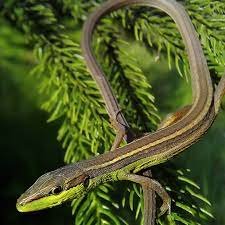
The name of the long-tailed lizard gives away its most distinctive feature. It has a tail that is much too long for its body, giving it an unnatural appearance. Adults of this common species can grow to a length of 10 to 12 inches. Though the tail only adds about eight inches to the total length, it certainly isn’t an afterthought. As they scurry along the floor of the enclosure, it whips behind them. It’s worth noting that this is a very swift lizard species. They can think and act quickly under pressure. Therefore, they are sometimes difficult to manage. You need to take extra precautions to prevent the lizard from jumping out of your hands and running away.
With children, you should also take precautions. The lizard will use its tail as a weapon when threatened.
Choosing a lizard for a pet may seem like a daunting task at first, but if you stick to our suggestions, you’ll have a much easier time.

